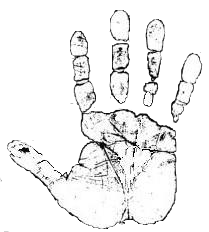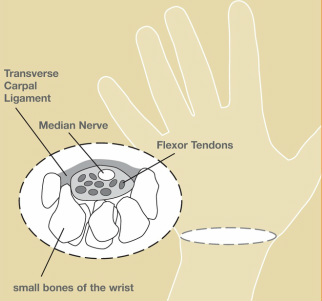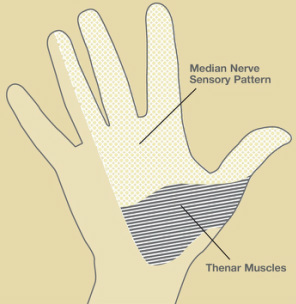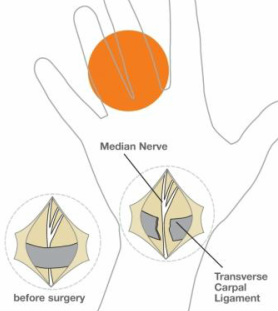MAKE AN APPOINTMENT TODAY!
Carpal Tunnel Syndrome
Carpal tunnel syndrome is a condition brought on by increased pressure on the median nerve at the wrist. In effect, it is a pinched nerve at the wrist. Symptoms of carpal tunnel syndrome may include numbness, tingling, and pain in the arm, hand, and fingers. There is a space in the wrist called the carpal tunnel where the median nerve and nine tendons pass from the forearm into the hand (see Figure 1). Carpal tunnel syndrome happens when pressure builds up from swelling in this tunnel and puts pressure on the nerve. When the pressure from the swelling becomes great enough to disturb the way the nerve works, numbness, tingling, and pain may be felt in the hand and fingers (see Figure 2).
Carpal Tunnel SymptomsCarpal tunnel syndrome symptoms usually include pain, numbness, tingling, or a combination of the three. The numbness or tingling most often takes place in the thumb, index, middle, and ring fingers. The symptoms usually are felt during the night but also may be noticed during daily activities such as driving or reading a newspaper. Patients may sometimes notice a weaker grip, occasional clumsiness, and a tendency to drop things. In severe cases, sensation may be permanently lost and the muscles at the base of the thumb slowly shrink (thenar atrophy), causing difficulty with pinch.
Carpal Tunnel DiagnosisA detailed history including medical conditions, how the hands have been used, and whether there were any prior injuries is important. An x-ray may be taken to check for the other causes of the complaints such as hand arthritis or a hand fracture. In some cases, laboratory tests may be done if there is a suspected medical condition that is associated with carpal tunnel syndrome. A nerve conduction study (NCV) and/or electromyogram (EMG) may be done to confirm the diagnosis of carpal tunnel syndrome as well as to check for other possible nerve problems.
|
Carpal Tunnel TreatmentCarpal Tunnel Syndrome symptoms may often be relieved without surgery. Identifying and treating medical conditions, changing the patterns of hand use, or keeping the wrist splinted in a straight position may help reduce pressure on the nerve. Wearing wrist splints at night may relieve the symptoms that interfere with sleep. A steroid injection into the carpal tunnel may help relieve the symptoms by reducing swelling around the nerve. When symptoms are severe or do not improve, surgery may be needed to make more room for the nerve. Pressure on the nerve is decreased by cutting the ligament that forms the roof (top) of the carpal tunnel on the palm side of the hand (see Figure 3). Incisions for this surgery may vary, but the goal is the same: to enlarge the carpal tunnel and decrease pressure on the nerve. Following surgery, soreness around the incision may last for several weeks or months. The hand numbness and tingling may disappear quickly or slowly. It may take several months for strength in the hand and wrist to return to normal. Carpal tunnel symptoms may not completely go away after surgery, especially in severe cases.
For more detailed information on carpal tunnel syndrome, its symptoms, diagnosis, and treatment options, please Omaha Carpal Tunnel website. |
Reproduced with permission from the American Society for Surgery of the Hand www.handcare.org
Disclaimer and Privacy
IZADIHAND.COM © 2011-2022 Kayvon David Izadi MD - All Rights Reserved
Webmaster
IZADIHAND.COM © 2011-2022 Kayvon David Izadi MD - All Rights Reserved
Webmaster



